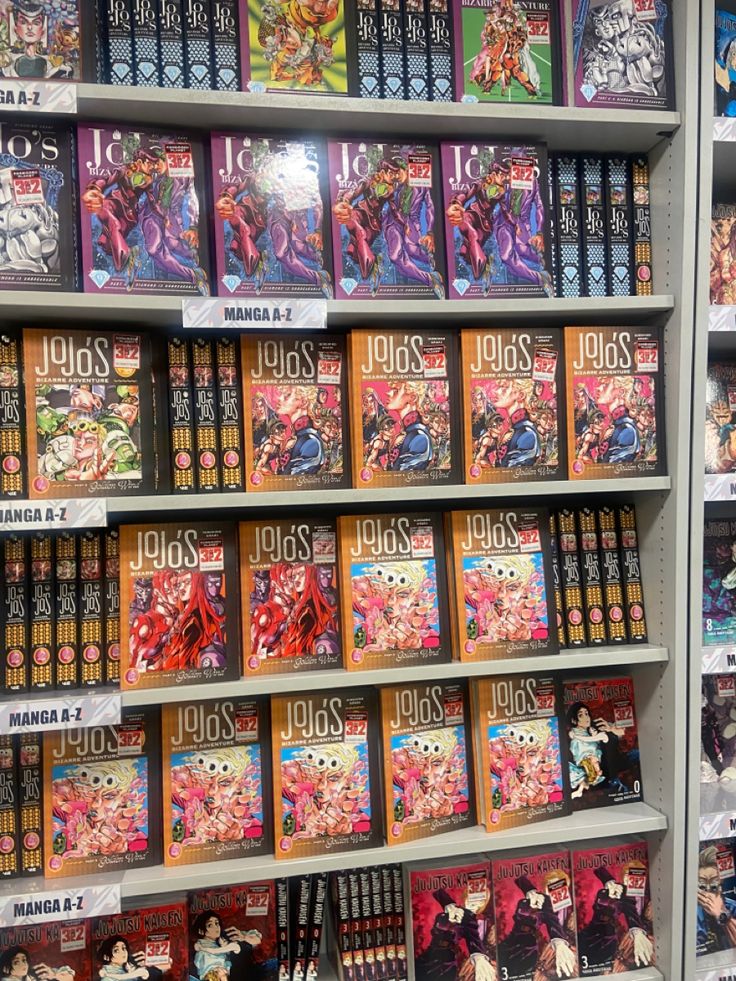
What Makes Paper Quality So Important in Premium Manga Editions
Share
Opening a premium manga edition is a special experience. The moment you touch the crisp page, you notice the weight and texture beneath your fingers. That sensation is no accident. Paper quality shapes the entire reading experience, preserves the artwork's brilliance, and adds lasting value for collectors. The weight, finish, and durability of each page contribute more than just physical form—they elevate the story itself. This article breaks down why these paper qualities matter so much.
Paper Weight and Thickness
Paper weight measures how dense and sturdy the paper feels, usually expressed in grams per square meter (gsm). For premium manga editions, paper typically ranges from 100 to 120 gsm, noticeably thicker than the 70 to 80 gsm used in standard releases.

This heavier paper feels solid and substantial in your hands. Flipping through a thicker page offers a tactile satisfaction and signals quality—it's not flimsy or prone to bending easily. More importantly, the extra thickness supports detailed artwork by providing a firm background that prevents ink from bleeding through or smudging.
Durability in Daily Use
Heavier paper helps fight the common issues found in cheaper manga: creases, tears, and worn edges caused by frequent page-turning. Thin pages easily crumple or rip when readers are fully engaged in the story. A 100-120 gsm page stands up to frequent use, holding its shape and form much longer.
Think of it as armour for the manga—the pages keep their pristine look rather than showing wear after a few reads. This makes a big difference for anyone who rereads or shares manga regularly.
Tactile Pleasure for Fans
For manga fans, the feel of each page is a big part of the experience. A thicker, sturdier page offers a satisfying flip that matches the premium story quality inside. Many collectors say they choose special editions because of the texture and weight of the paper, which enhances their connection to the art and story.
That little extra care in paper weight turns reading from a simple action into a moment of joy.

Weight vs Shipping Costs
Of course, heavier paper weighs more and means higher shipping costs. But for dedicated readers, the increased value and durability far outweigh those slightly higher expenses. Premium manga buyers usually want something that lasts and feels special.
Surface Finish and Ink Absorption
The paper finish plays a vital role in how the art looks and how the book feels to handle. Common finishes include matte, satin, and glossy. Each offers different benefits for ink absorption, colour vibrancy, and resistance to glare or fingerprints.
Sharp Lines and Bright Colours
Smoother finishes, like satin or glossy, allow the ink to sit cleanly on top of the paper. This results in sharp outlines and vibrant colours that really pop on the page. A glossy finish creates a visually dynamic effect perfect for bright scenes and dramatic contrasts.
Matte finishes, on the other hand, reduce reflection and glare, offering a soft, elegant look that doesn’t distract from fine details in linework or shading.
Preventing Bleed-Through
Premium paper is engineered to absorb ink evenly, preventing any ink from soaking through to the next page. This maintains clean double-page spreads, essential for immersive storytelling. Bleed-through can ruin the artwork and blur text, so a high-quality paper weight combined with the right finish keeps images crisp and readable.
Choosing the Right Finish for Art Style
Different manga genres often benefit from different finishes.
- Glossy is a favourite for science fiction or futuristic manga that uses neon colours and sharp effects.
- Matte works well for classic shōnen styles with bold, strong lines, where the focus is on story and character expression without excess shine.
Matching the finish to the artwork can give a richer reading experience that suits the tone of the story.

For more about paper finishes suitable for printing vibrant images, Epson Matte papers offer archival quality that supports long-lasting print clarity and are ideal for art-heavy books. Epson Coated Paper (Matte) is a great example.
Longevity and Collectibility
The quality of paper greatly affects how well a manga edition ages and how desirable it remains for collectors.
Resistance to Yellowing and Wear
Good quality manga paper uses acid-free fibers or meets archival standards. This slows down the yellowing and brittleness that lower-quality paper goes through as it ages. Acid-free paper keeps the book looking fresh even after years on the shelf.
No collector wants to hold a prized volume with pages turning yellow and fragile.
Value Retention for Collectors
Collectors are prepared to spend more on editions that stay in mint condition over time. Paper quality is a big factor behind resale value. Manga printed on thick, acid-free paper holds its worth better since fans know the book will survive many reads and remain visually stunning.
Eco-Friendly Premium Options
Sustainability matters for many manga fans today. Fortunately, eco-friendly premium paper choices now exist that offer durability and print quality without harming the environment. This appeals to fans who want to collect responsibly without sacrificing the feel and look of a special edition.
Conclusion
Paper quality might seem like a small detail, but it shapes the whole premium manga experience. The weight and thickness protect pages against damage and make every flip satisfying. The right surface finish enhances art with vibrant colours and crisp lines while preventing bleed-through. Long-lasting paper preserves manga editions for years, keeping them beautiful and valuable collectors’ items.
To truly appreciate what superior paper brings, check out the premium manga editions available at The Manga Menagerie. Feel the difference yourself and bring home volumes worthy of your collection.
